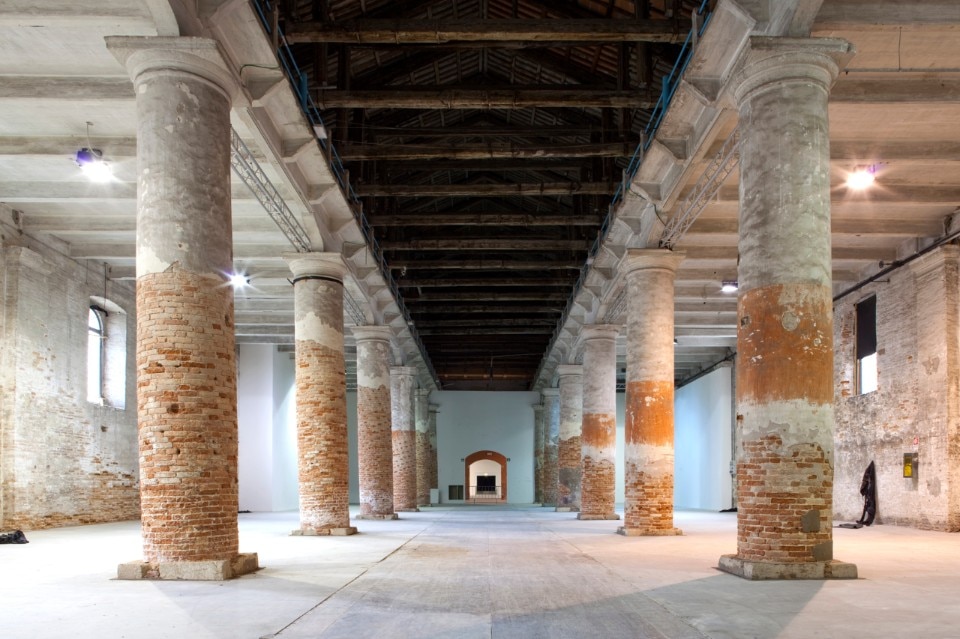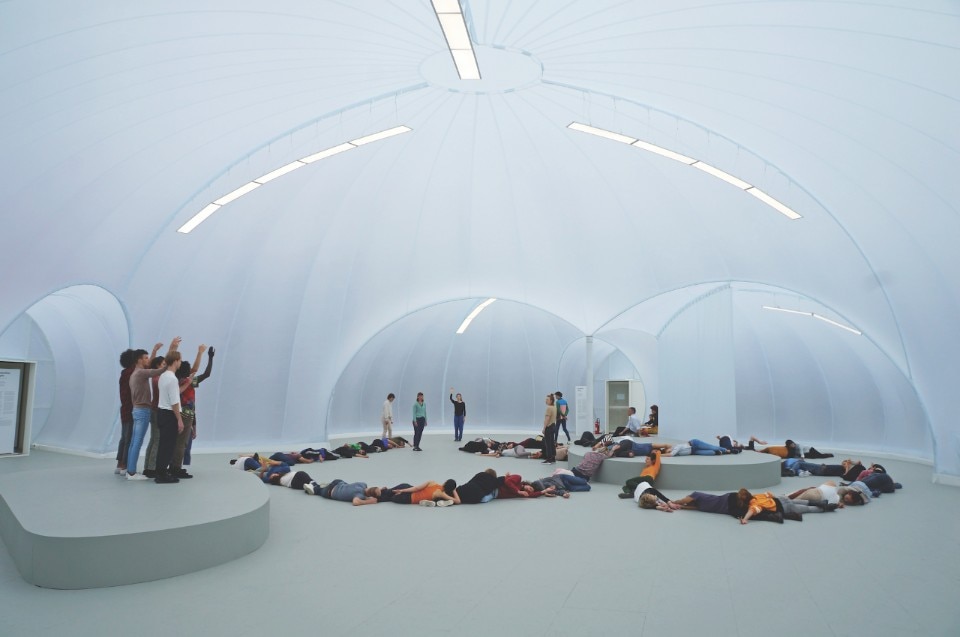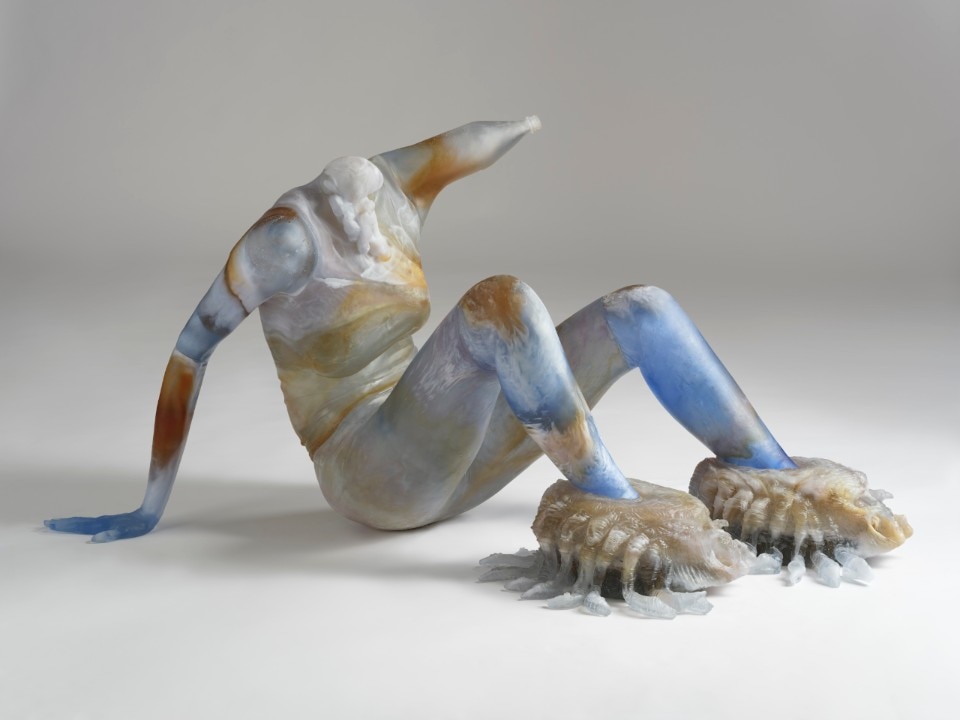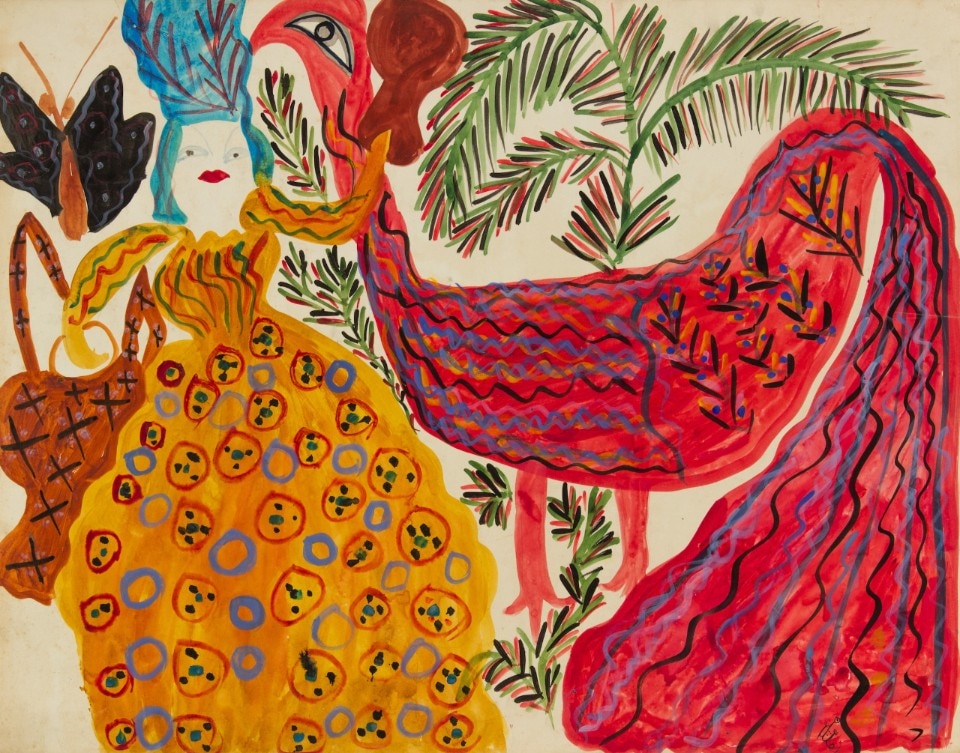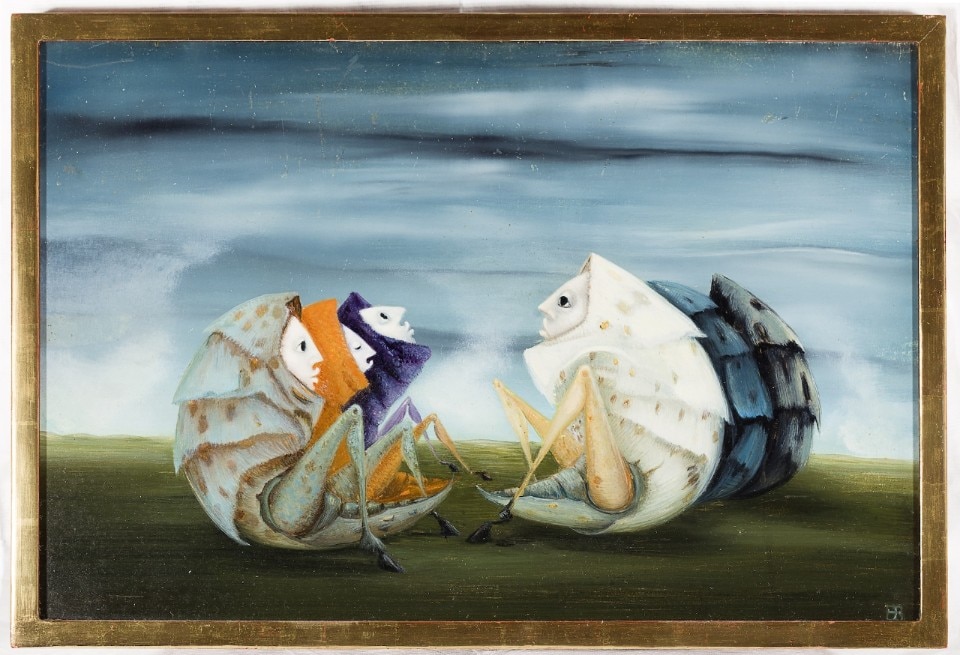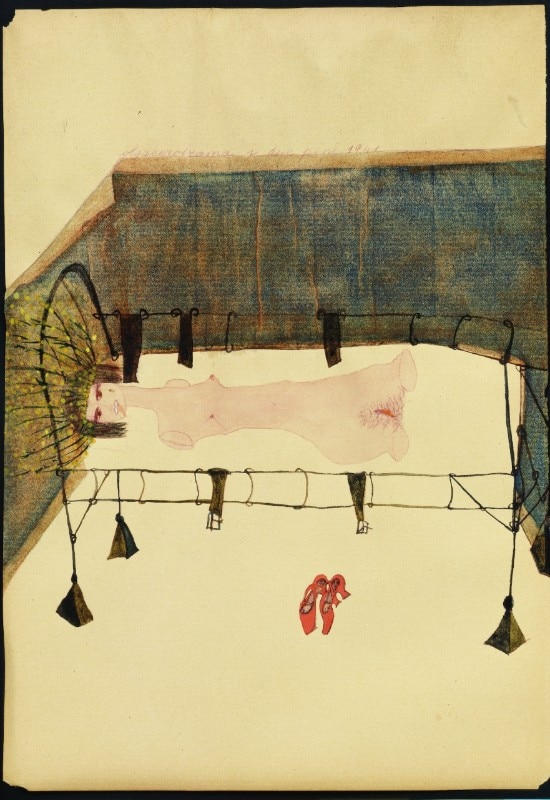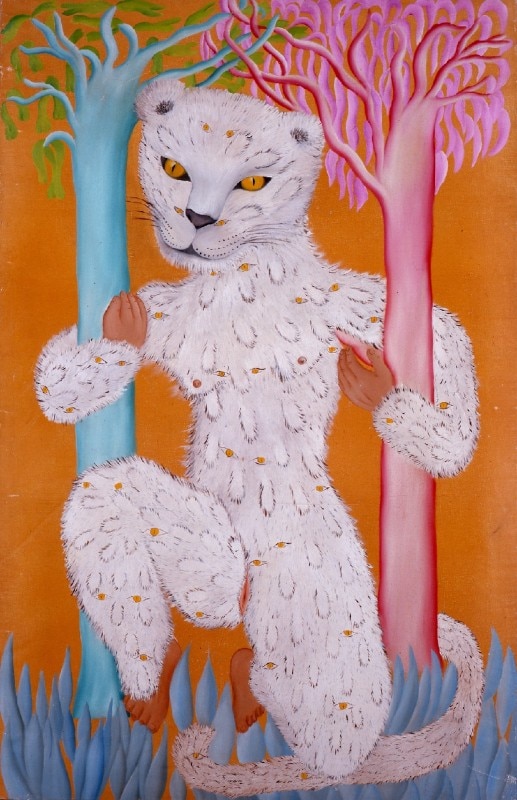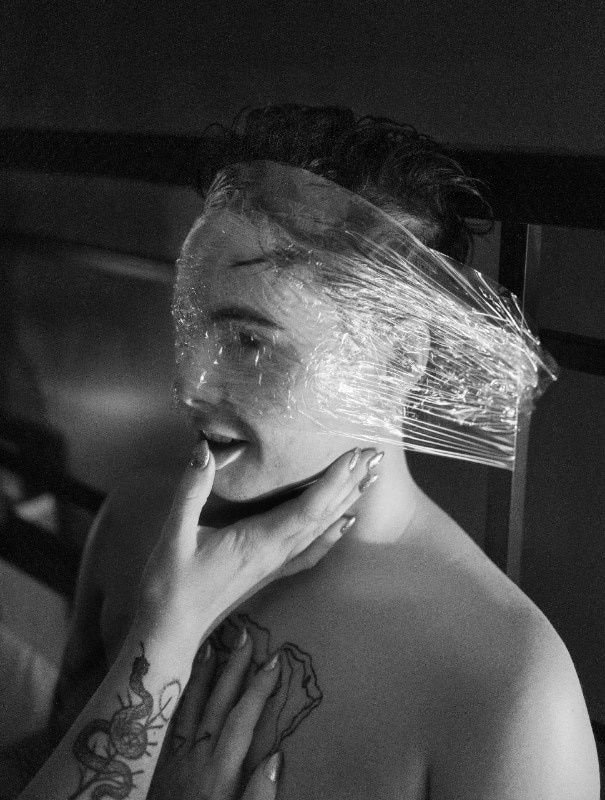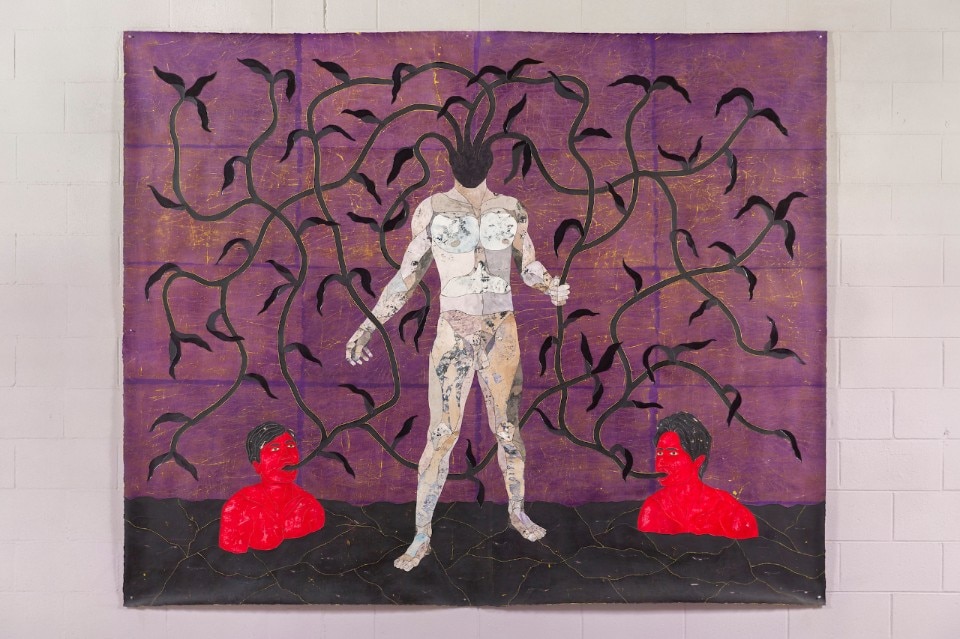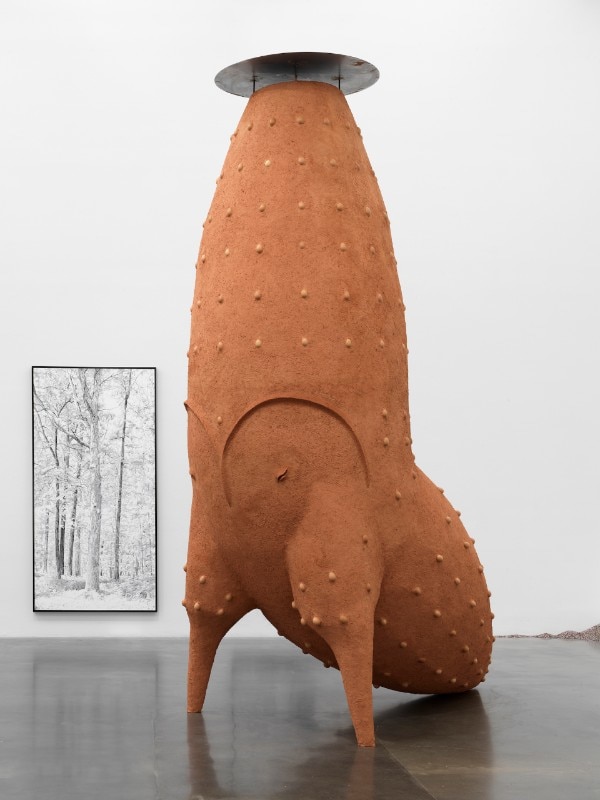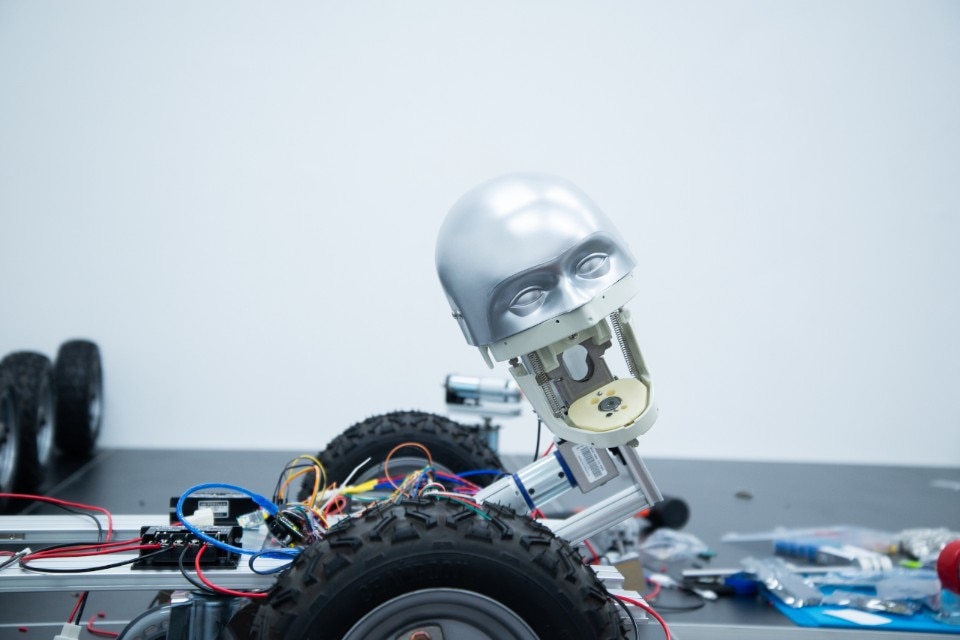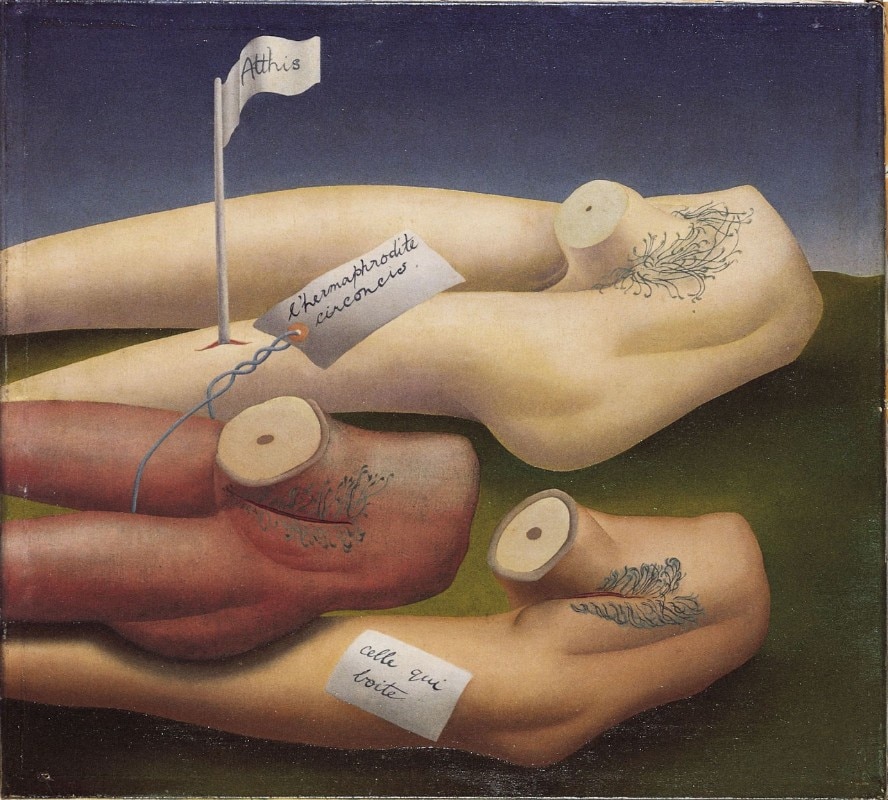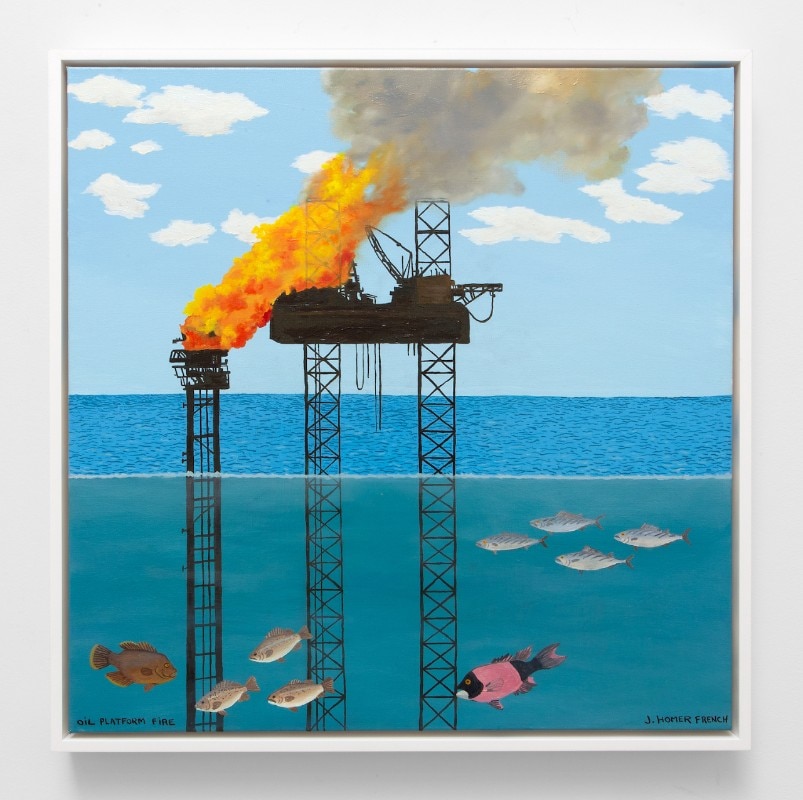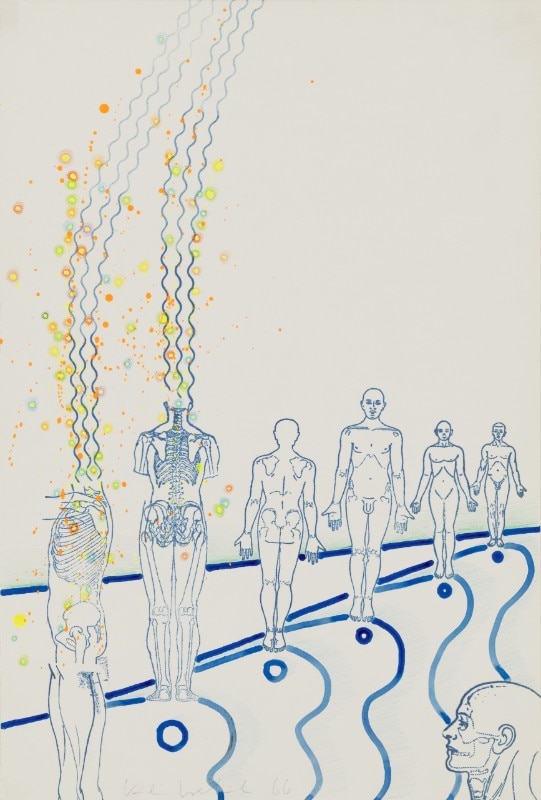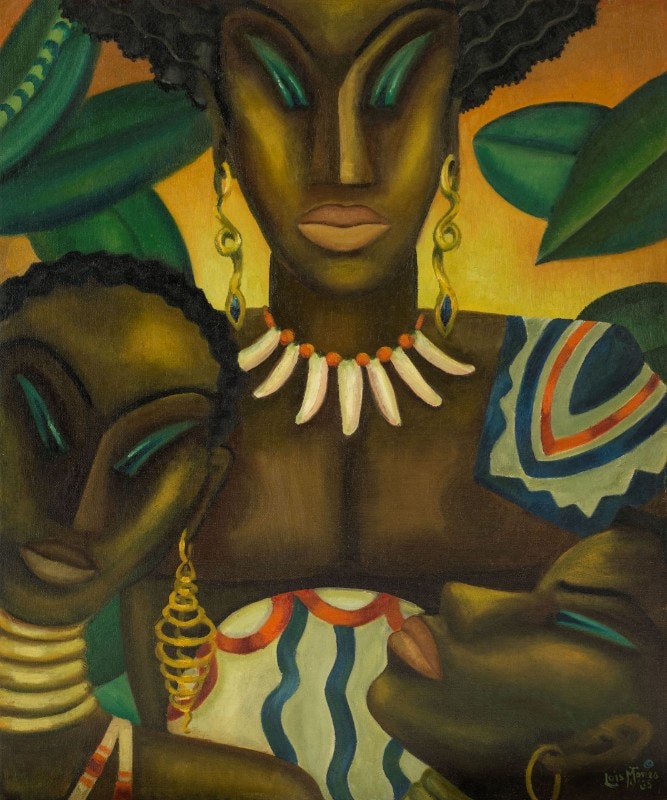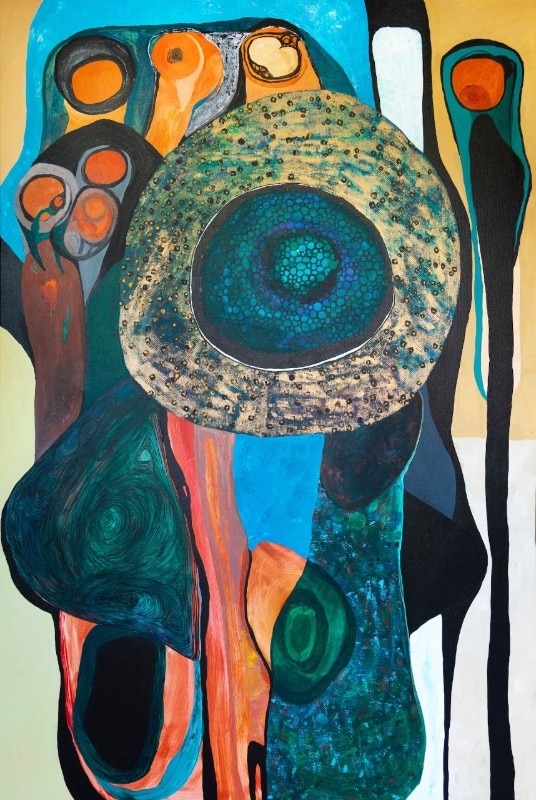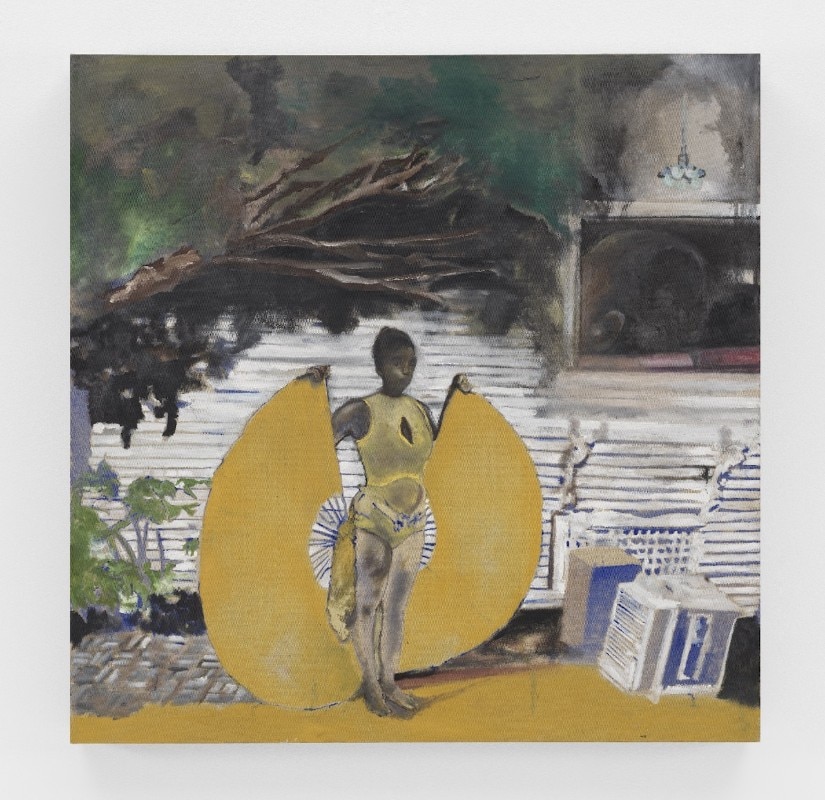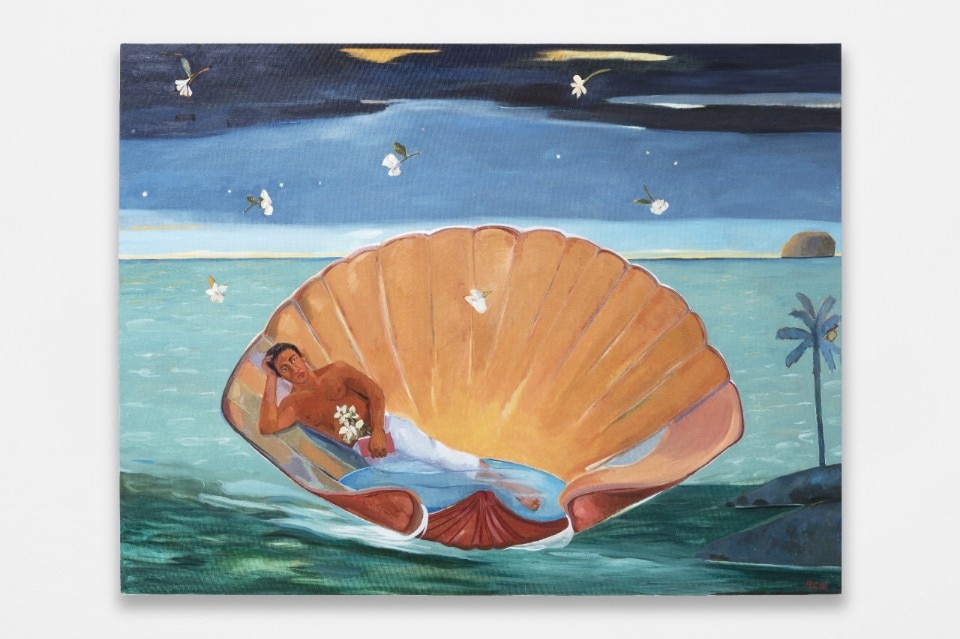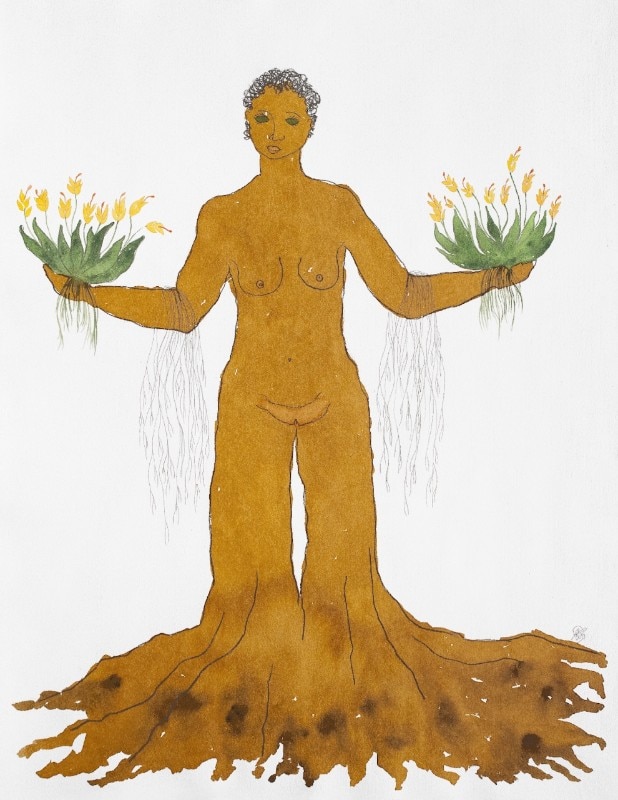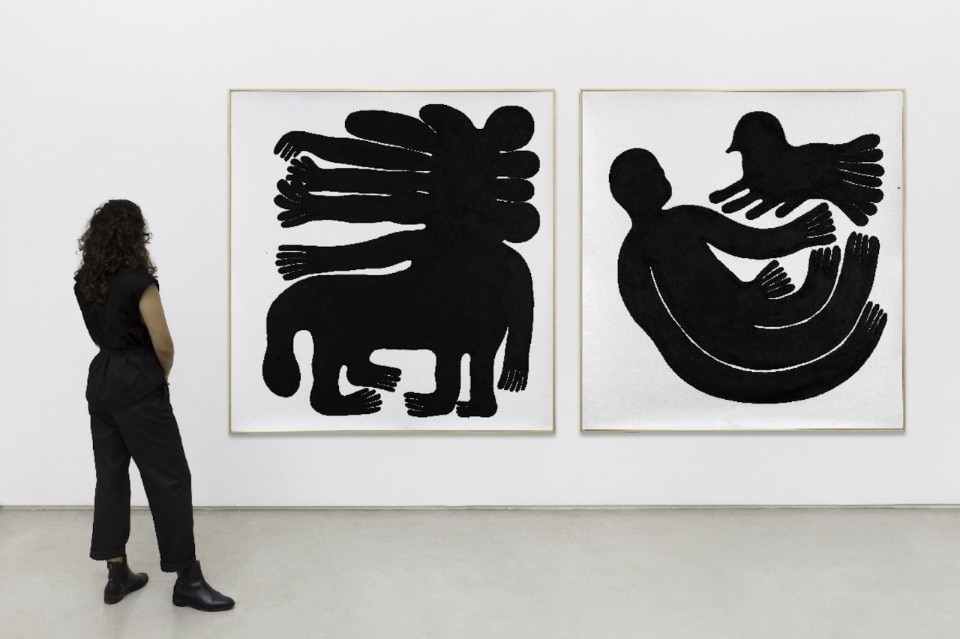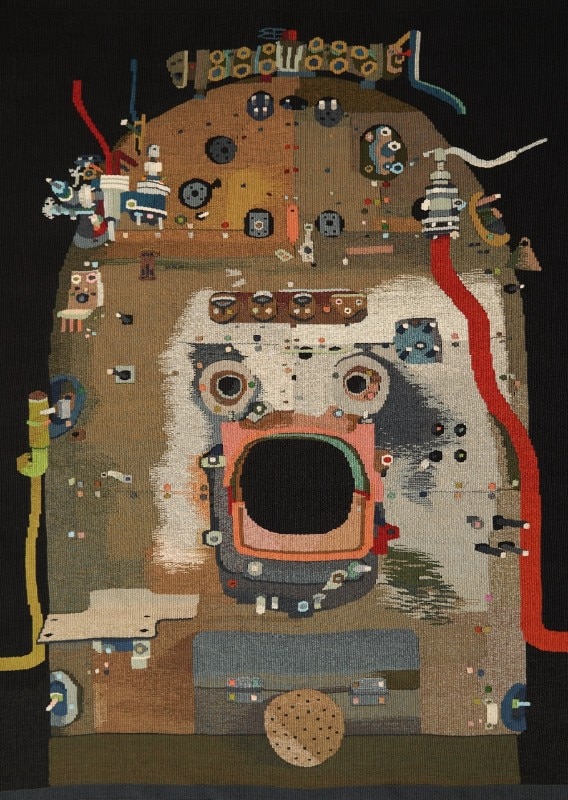The 59. International Art Exhibition will open to the public from Saturday 23rd of April to Sunday 27th of November 2022. The Exhibition, divided between the Central Pavilion at the Giardini and the Arsenale, will include 213 artists from 58 countries. There are 26 Italian artists, 180 first participations in the International Exhibition, 1433 works and objects on display, 80 new productions.
The milk of dreams
Appointed at the height of the pandemic, Italian curator Cecilia Alemani will lead the exhibition. A permanent resident of New York, Alemani has since 2011 been the director and chief curator of High Line Art, the public art programme presented by the High Line, the famous elevated urban park built on an abandoned railway in New York. In 2017, she previously curated the Italian Pavilion at the 57. International Art Exhibition of the Venice Biennale. The exhibition, titled “The Magic World”, featured new large-scale commissions by Giorgio Andreotta Calò, Adelita Husni-Bey and Roberto Cuoghi.
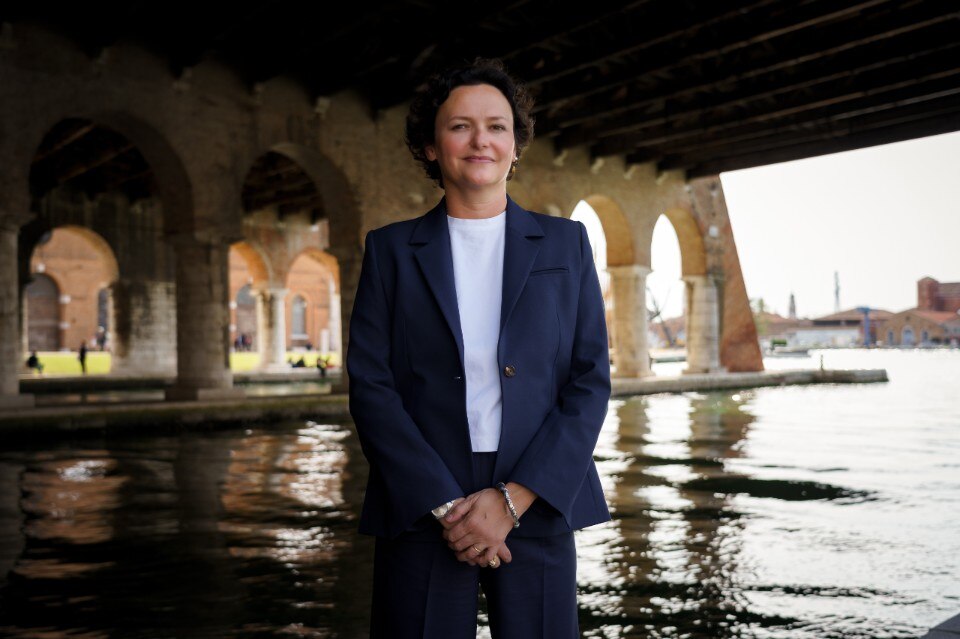
Alemani chose the British painter and writer Leonora Carrington, who passed away in 2011, as his traveling companion for this important event. The exhibition takes its name from her book The Milk of Dreams, an important work in which “the surrealist artist describes a magical world in which life is constantly reinvented through the prism of the imagination and in which it is possible to change, transform oneself, become other than oneself. The exhibition proposes an imaginary journey through the metamorphosis of bodies and definitions of the human being”.
Therefore, it will be a Biennale “against the Renaissance,” as anticipated by the writer Chiara Valerio, who will write one of the essays in the catalog. This reversal of perspective is the result of the many questions that have emerged from this precise historical moment in which the very survival of humanity is threatened and summarises many other issues that have dominated the sciences, arts, and myths of our time. “How is the definition of human changing? What are the differences that separate the plant, the animal, the human and the non-human? What are our responsibilities towards our fellow human beings, other life forms and the planet we inhabit? And what would life be like without us?” explains Alemani.
Thematic capsules
With an installation by Formafantasma – a design studio composed of the Italian duo of Andrea Trimarchi and Simone Farresin – five thematic rooms with a historical character structure the exhibition itinerary through a series of constellations in which the works are collected to address some of the fundamental themes of the exhibition. There will be three capsules in the Central Pavilion at the Giardini: The Witch’s Cradle, Technologies of Enchantment and Orbit Body.
The Witch’s Cradle is inspired by the work of Maya Deren and presents the works of artists connected to the 20th century avant-garde such as Surrealism, Futurism, Bauhaus or the Harlem Renaissance movement, such as Remedios Varo, Leonor Fini, Gertrud Arndt, Carol Rama, Jane Graverol, Meta Vaux Warrick Fuller, Dorothea Tanning, Baya Mahieddine.
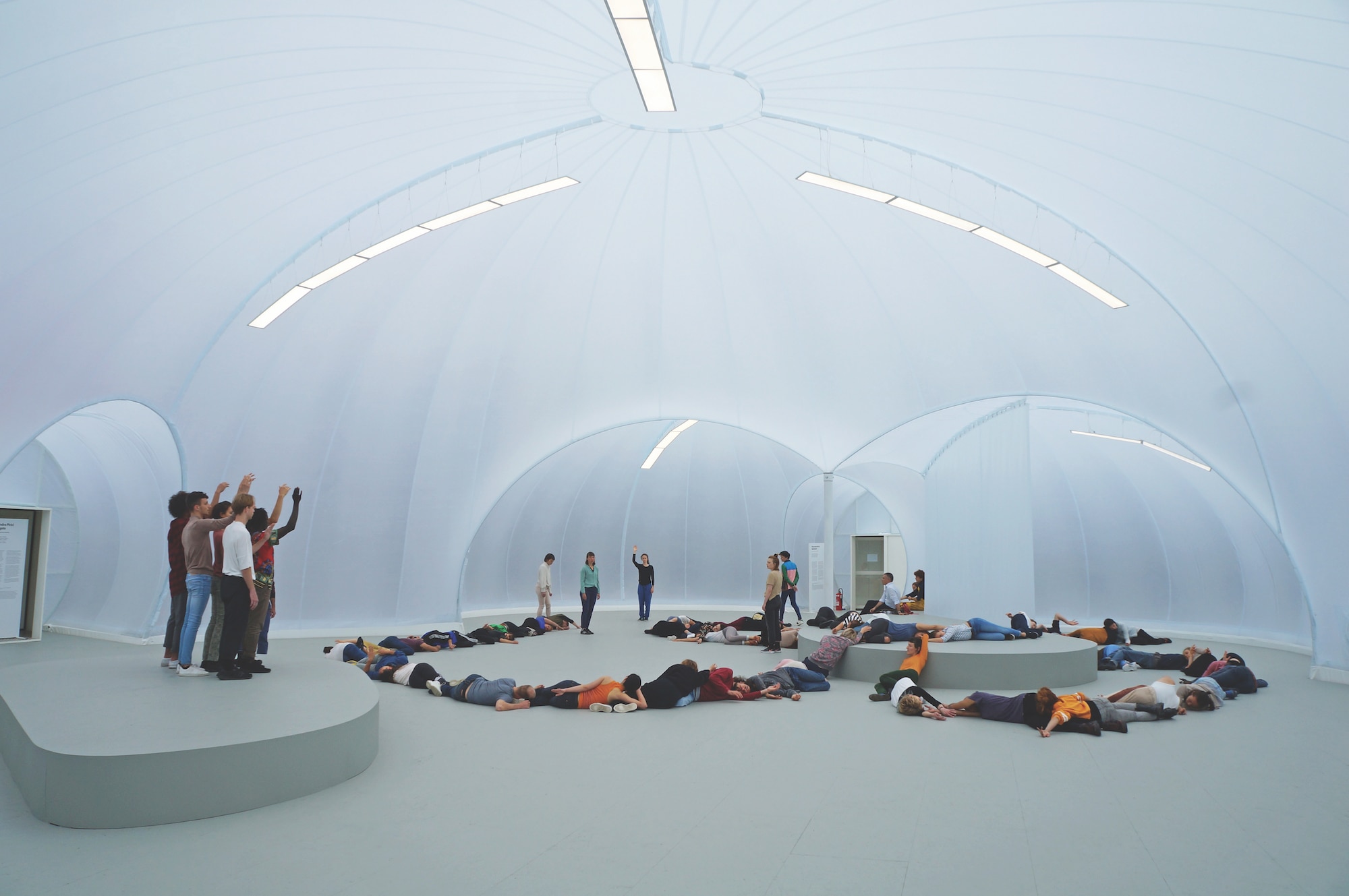
 View gallery
View gallery
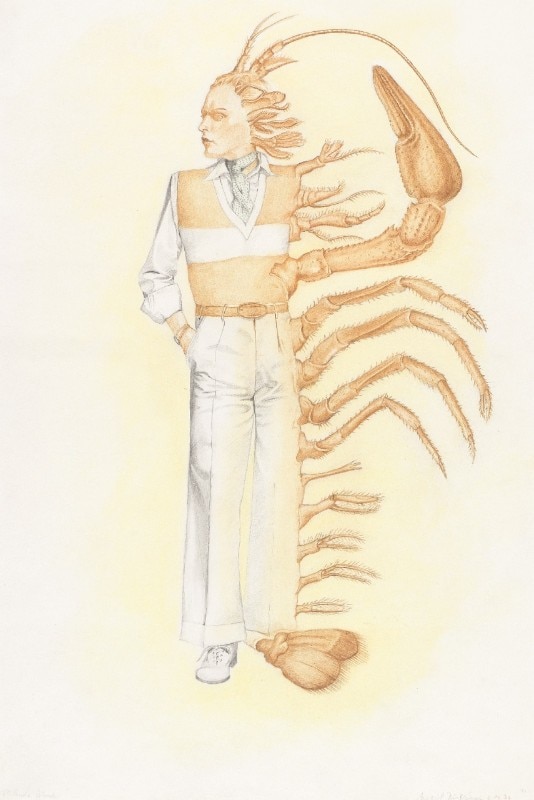
Birgit Jürgenssen, Missing Limbs, 1974
Photo Pixelstorm. Courtesy The Estate Birgit Jürgenssen, Vienna
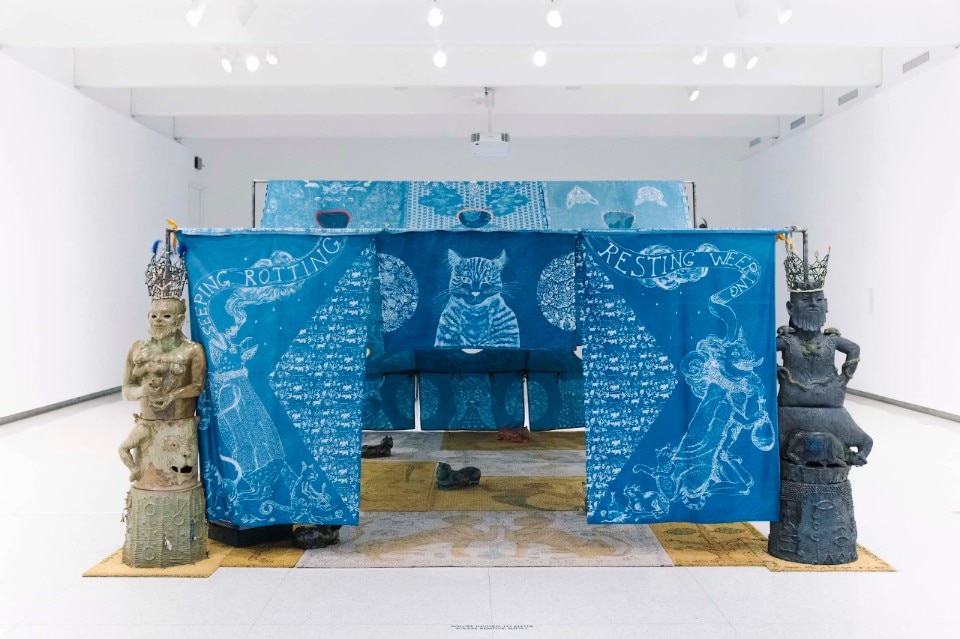
Candice Lin, Seeping, Rotting, Resting, Weeping, exhibition view from Walker Art Center, Minneapolis, 2021
Courtesy the Artist, François Ghebaly Gallery
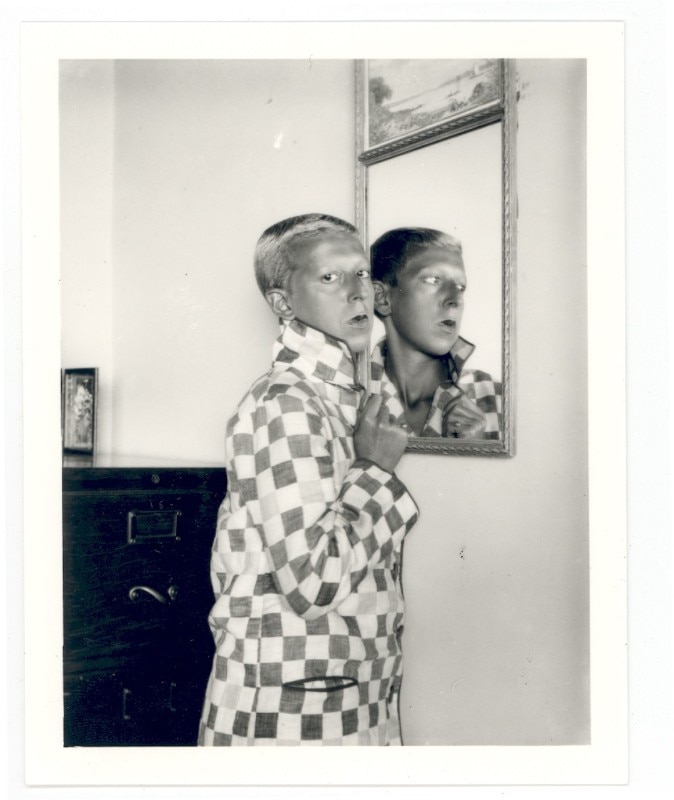
Claude Cahun, Self-portrait (reflected image in mirror, checquered jacket), 1928
Courtesy of the Jersey Heritage Collections
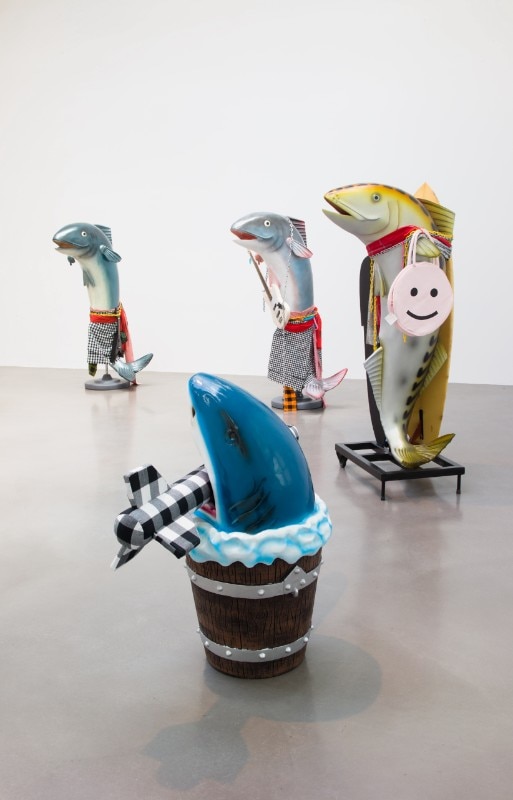
Cosima von Bonin, installation view of WHAT IF IT BARKS, Petzel Gallery, 2018
Photo Jason Mandella. Courtesy the Artist
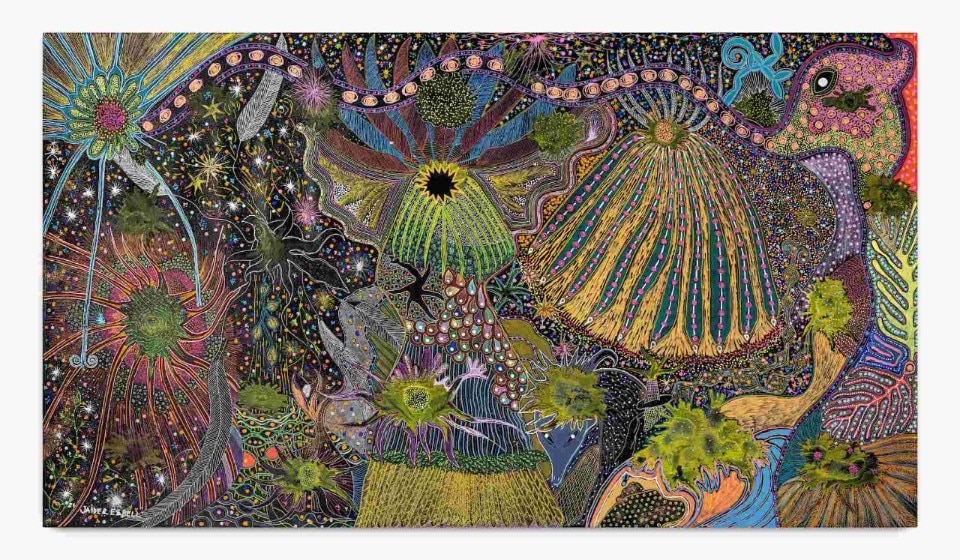
Jaider Esbell, Amamentação, 2021
Courtesy Galeria Jaider Esbell de Arte Indígena Contemporânea. Courtesy © Jaider Esbell Estatee
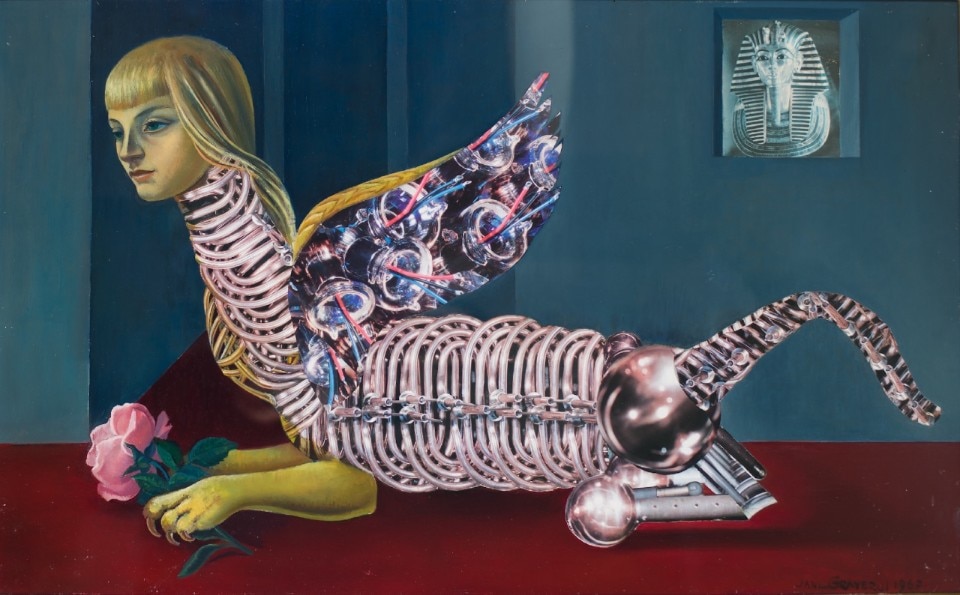
Jane Graverol, L’École de la Vanité, 1967
Photo Renaud Schrobiltgen. Collection Anne Boschmans. Courtesy Schirn Kunsthalle Frankfurt. © SIAE
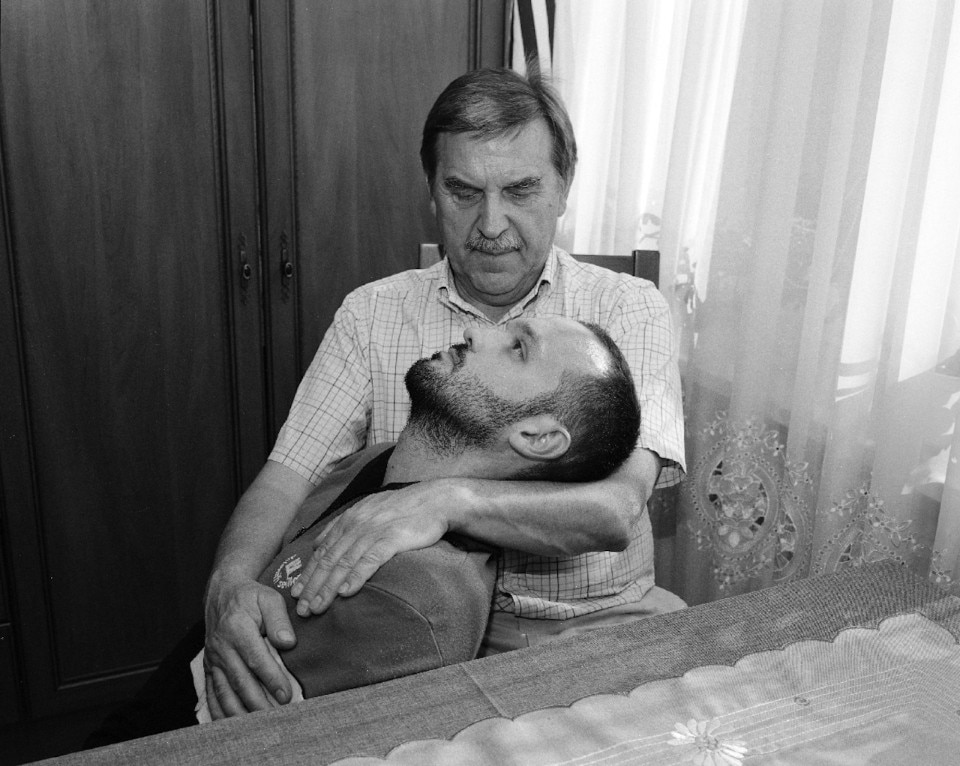
Joanna Piotrowska, Untitled, 2013–2022
Courtesy Southard Reid, Madragoa, Thomas Zander, Dawid Radziszewski
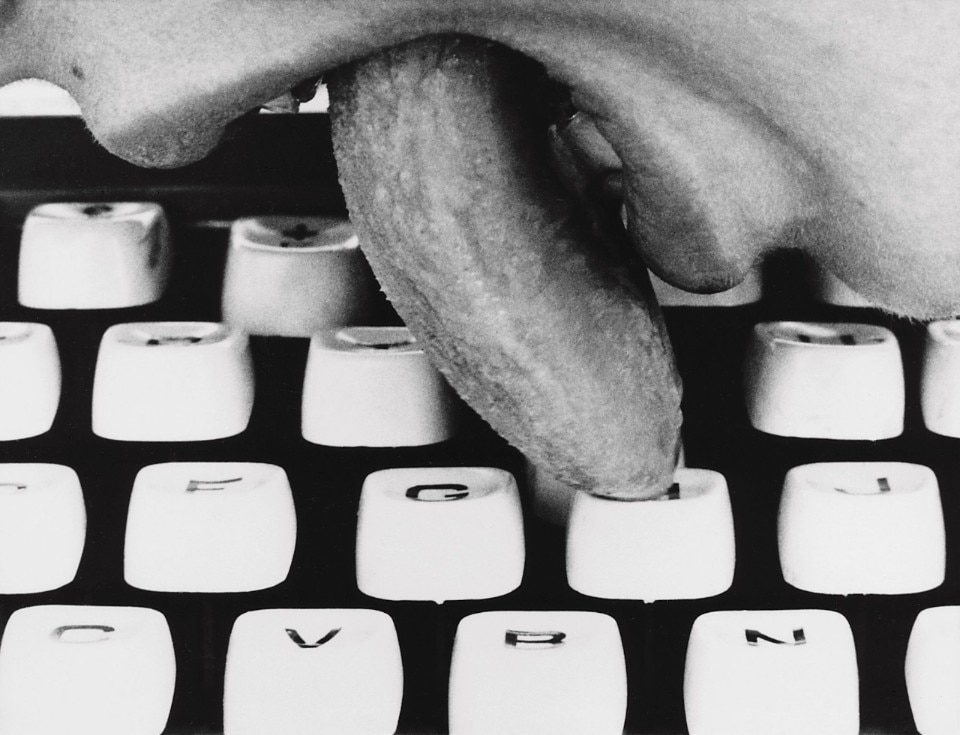
Lenora de Barros, POEMA (POEM), 1979-2014.
Photo Fabiana de Barros. Courtesy the Artist
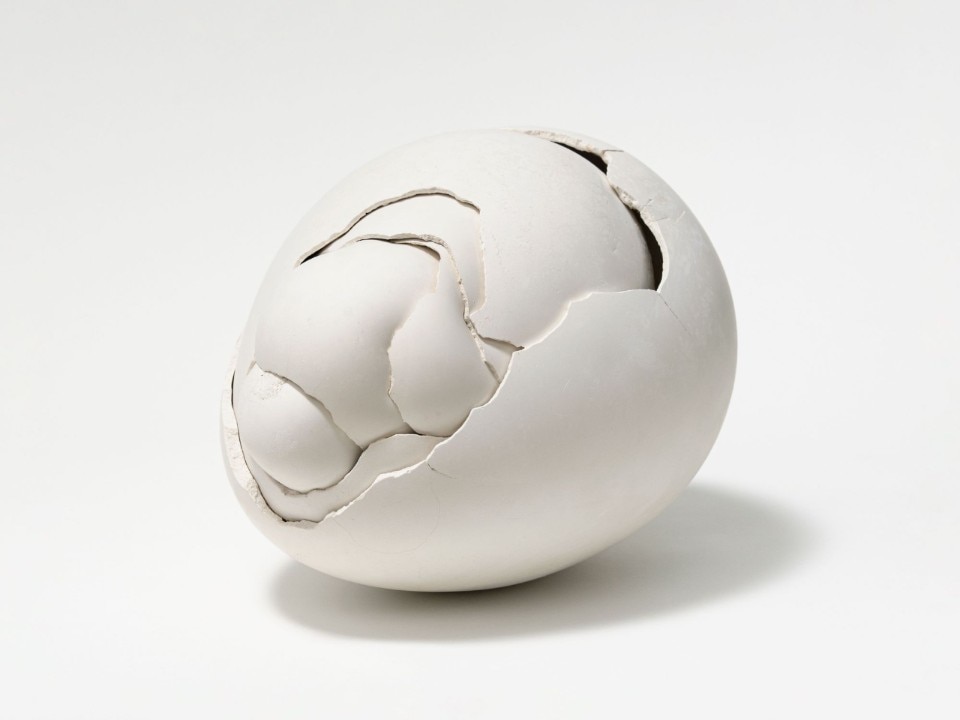
Maria Bartuszová, Untitled (from the series ‘Endless Egg’), 1985
Photo Michael Brzezinski. Courtesy The Estate of Maria Bartuszová
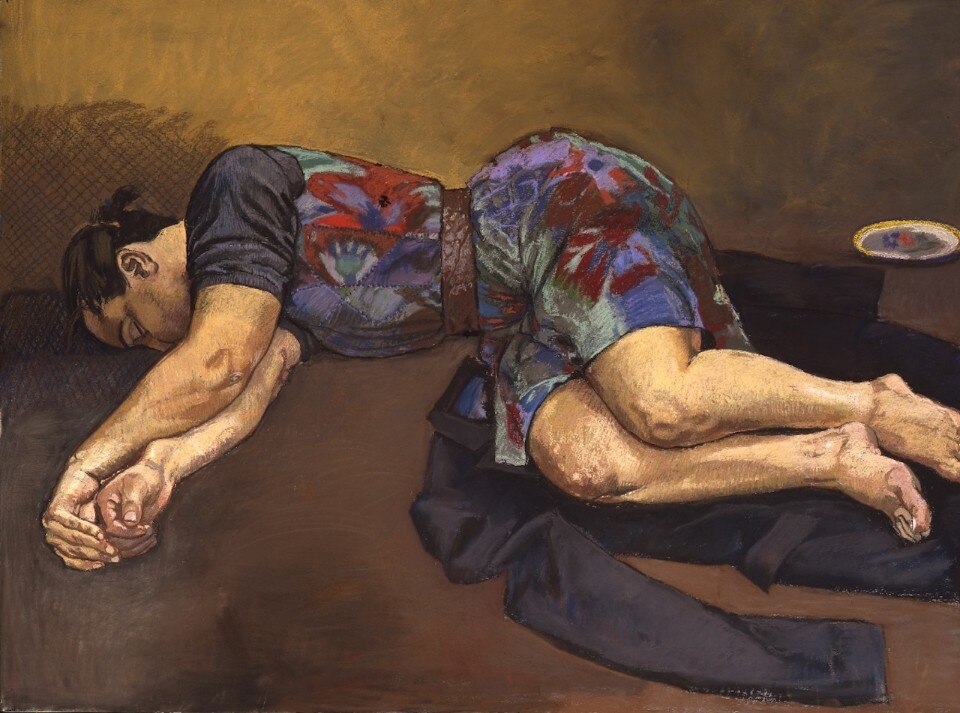
Paula Rego, Sleeper, 1994
Photo Nick Willing. Private Collection. Courtesy © Paula Rego
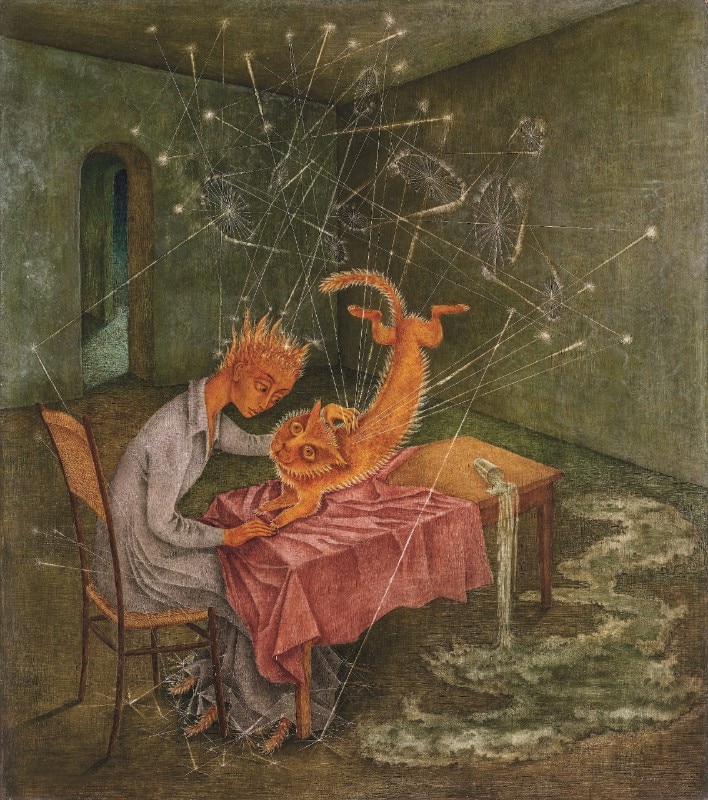
Remedios Varo, Simpatía (La rabia del gato), 1955
Collection Eduardo F. Costantini, Buenos Aires. Courtesy © Artists, SIAE
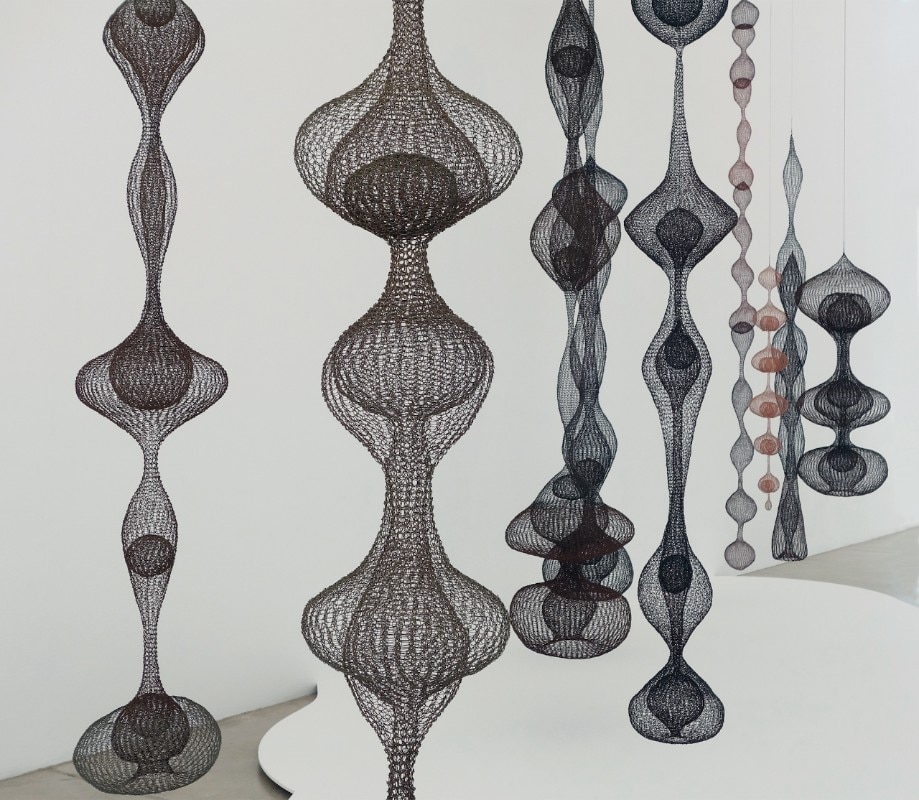
Ruth Asawa, installation view, Ruth Asawa, Life’s Work at the Pulitzer Arts Foundation, St. Louis, 2018
Photo © Laurence Cuneo. Courtesy David Zwirner, SIAE
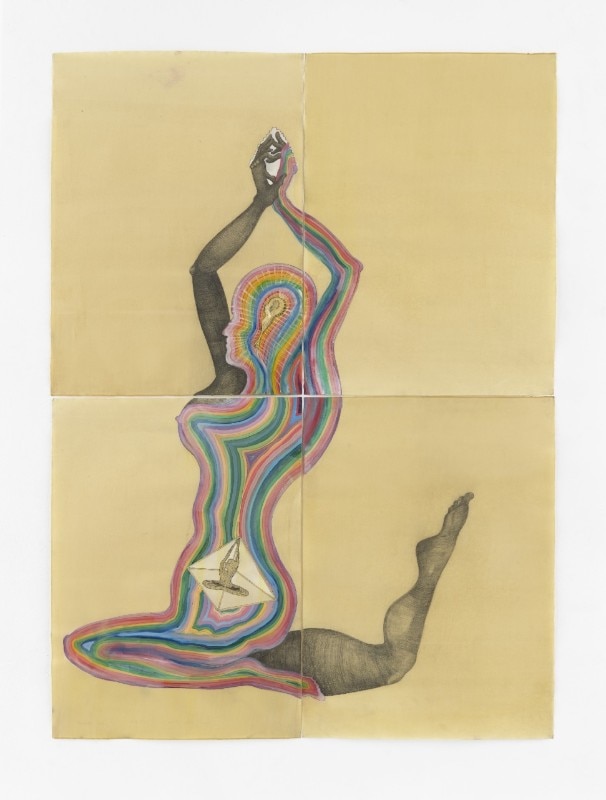
Sandra Vásquez de la Horra, Soy Energía, 2021
Photo Eric Tschernow. Courtesy © Sandra Vásquez de la Horra

Birgit Jürgenssen, Missing Limbs, 1974
Photo Pixelstorm. Courtesy The Estate Birgit Jürgenssen, Vienna

Candice Lin, Seeping, Rotting, Resting, Weeping, exhibition view from Walker Art Center, Minneapolis, 2021
Courtesy the Artist, François Ghebaly Gallery

Claude Cahun, Self-portrait (reflected image in mirror, checquered jacket), 1928
Courtesy of the Jersey Heritage Collections

Cosima von Bonin, installation view of WHAT IF IT BARKS, Petzel Gallery, 2018
Photo Jason Mandella. Courtesy the Artist

Jaider Esbell, Amamentação, 2021
Courtesy Galeria Jaider Esbell de Arte Indígena Contemporânea. Courtesy © Jaider Esbell Estatee

Jane Graverol, L’École de la Vanité, 1967
Photo Renaud Schrobiltgen. Collection Anne Boschmans. Courtesy Schirn Kunsthalle Frankfurt. © SIAE

Joanna Piotrowska, Untitled, 2013–2022
Courtesy Southard Reid, Madragoa, Thomas Zander, Dawid Radziszewski

Lenora de Barros, POEMA (POEM), 1979-2014.
Photo Fabiana de Barros. Courtesy the Artist

Maria Bartuszová, Untitled (from the series ‘Endless Egg’), 1985
Photo Michael Brzezinski. Courtesy The Estate of Maria Bartuszová

Paula Rego, Sleeper, 1994
Photo Nick Willing. Private Collection. Courtesy © Paula Rego

Remedios Varo, Simpatía (La rabia del gato), 1955
Collection Eduardo F. Costantini, Buenos Aires. Courtesy © Artists, SIAE

Ruth Asawa, installation view, Ruth Asawa, Life’s Work at the Pulitzer Arts Foundation, St. Louis, 2018
Photo © Laurence Cuneo. Courtesy David Zwirner, SIAE

Sandra Vásquez de la Horra, Soy Energía, 2021
Photo Eric Tschernow. Courtesy © Sandra Vásquez de la Horra
The second capsule, Technologies of Enchantment, investigates “the relationship between the body and technology, reflecting on the idea of membrane and screen. Through an abstract and cybernetic language, they reflect on abstraction and the body and anticipate today’s concerns about technology”. Here we find Laura Grisi, Nanda Vigo, Grazia Varisco, Marina Apollonio, Lucia Di Luciano and Dadamaino.
The Orbiting Body capsule is inspired by the exhibition “Materialization of Language”, part of the 1978 Biennale and curated by the artist Mirella Bentivoglio, and will focus on the relationship between body and language. Works by Mary Ellen Solt, Tomaso Binga, Unica Zűrn and Minnie Evans will appear and photographic documentation of sessions by Osapio Palladino and Linda Gazzera.
At the Arsenale, the exhibition opens with the work of artist Belkis Ayón who, influenced by Afro-Cuban traditions, describes an imaginary matriarchal community. Here the research path will focus on the relationship between individuals and land. The first capsule is presented with the long title A leaf, a gourd, a shell, a net, a bag, a shoulder strap, a saddlebag, a bottle, a pot, a box, a container, a quotation from Ursula K. Le Guin. Le Guin. Various imaginative organic forms emerge in this capsule, sculpted, painted or moulded by Ruta Asawa, Toshiko Takaezu, Bridget Tichenor, Maria Bartuszová and Aletta Jacobs.
The last capsule is entitled Seduction of a Cyborg, with a selection of works from Dada, Bauhaus and Futurism, exhibiting Marianne Brandt, Marie Vassilieff, Anna Coleman Ladd, Aleksandra Ekster, Regina Cassolo Bracchi, Kiki Kogelnik. “This presentation brings together artists who, during the 20th century, imagined new contaminations between the human and the artificial, creating the avatars of a post-human and post-gender future.”
Italian Pavilion
Assigned to the curatorship of Eugenio Viola – currently Chief Curator at MAMBO – Museo de Arte Moderno de Bogotà, in Colombia – the Italian Pavilion will be entirely dedicated to the work of Gian Maria Tosatti, an artist who was recently also appointed the new Artistic Director of the Quadriennale di Roma.
Entitled History of the Night and Destiny of Comets, the pavilion will be grafted onto the lines traced by Alemani, calling into question the idea of “possible coexistences,” as underlined by Roberto Cicutto, President of the Venice Biennale. “The title refers to an uncertain and metapandemic present. We asked ourselves how art could reflect on these uncertain scenarios and talk about the environment and the territory,” said Viola. “The result will be a work with an irreducible theatrical syntax, which begins with a muted prologue and develops into two acts marked by the very name of the project”.
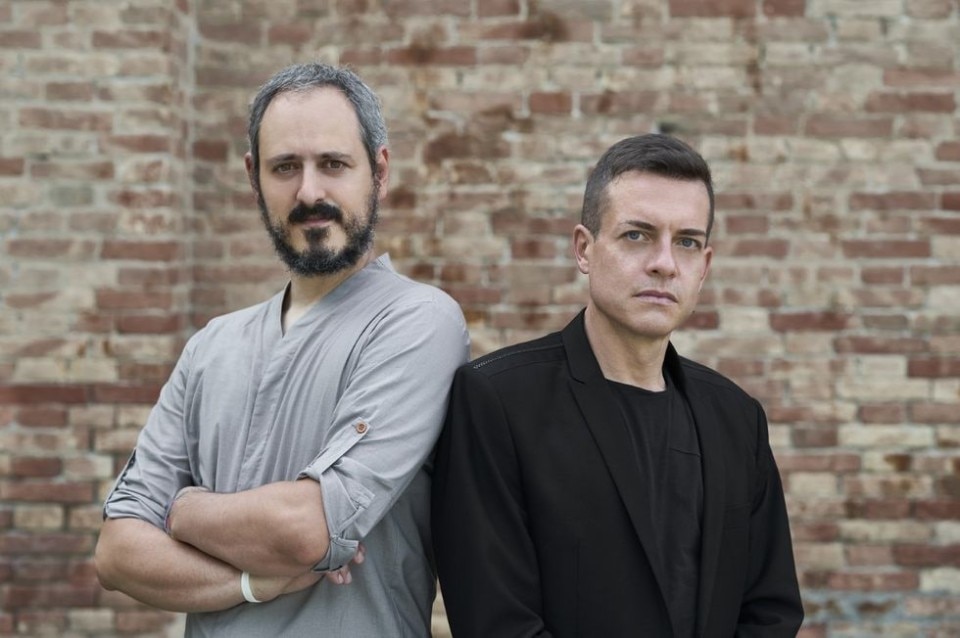
The History of the Night will be a symbolic tale of Italy’s economic rise in the immediate post-war period, which then led to the decline of the industrial dream: through a succession of spaces, settings will follow one another that evokes Ermanno Rea’s La Dismissione and resemble the expanse of warehouses spread across the landscape between Ragusa and Cremona, the only paradoxically homogeneous panorama of a hypothetical journey through provincial Italy.
The second act, Destiny of Comets, coincides with a catharsis, where nature, which does not forgive man, becomes the epilogue of the narrative. The exhibition thus concludes with a message of hope about the destiny awaiting humanity, which, like a comet, has crossed the universe in a great luminous wake. A complex experiential narrative machine that takes the visitor on a journey that is at times familiar and at times disorienting, to offer awareness and generate concrete reflections on the possible destiny of human civilization, poised between the dreams and mistakes of the past and the promises of a future yet to be written.
“Precisely because today’s times are uncertain, we believe that optimism must be an ethical necessity, a moral obligation,” Viola concluded during the press conference. “I believe that a work of art, a project or a pavilion is worthwhile if, once the experience is over, the visitor leaves with more questions than he entered with.”
Opening image: Biennale di Venezia, Corderie. Photo Giulio Squillacciotti. Courtesy La Biennale di Venezia


